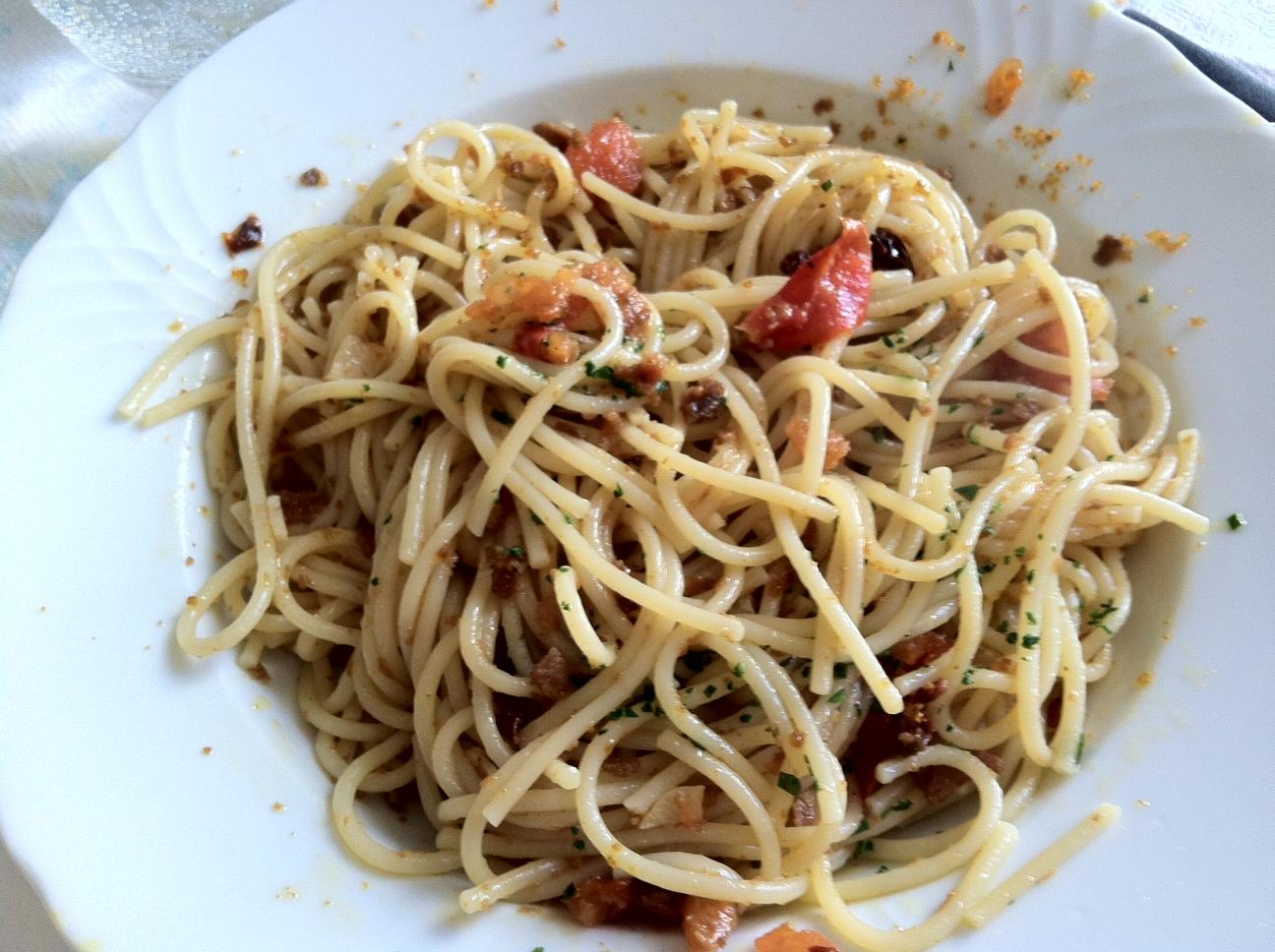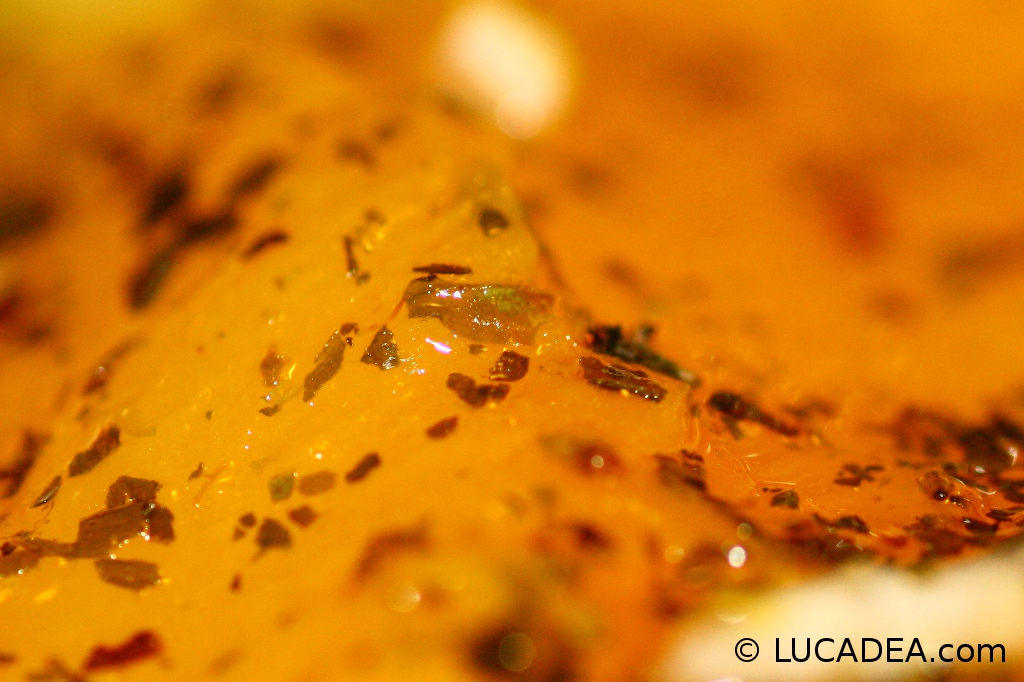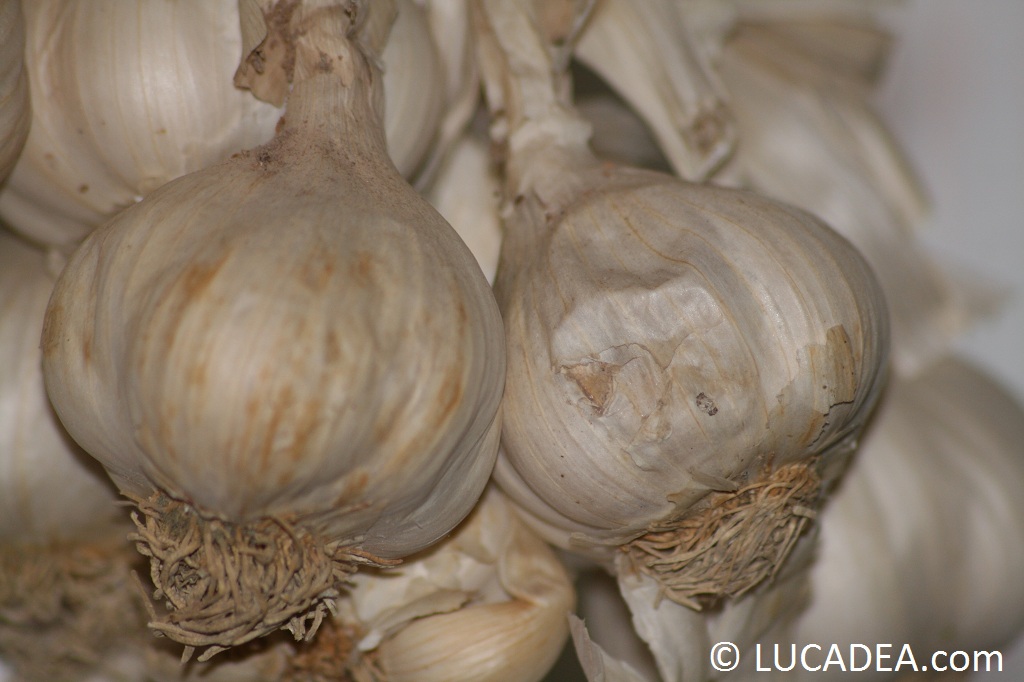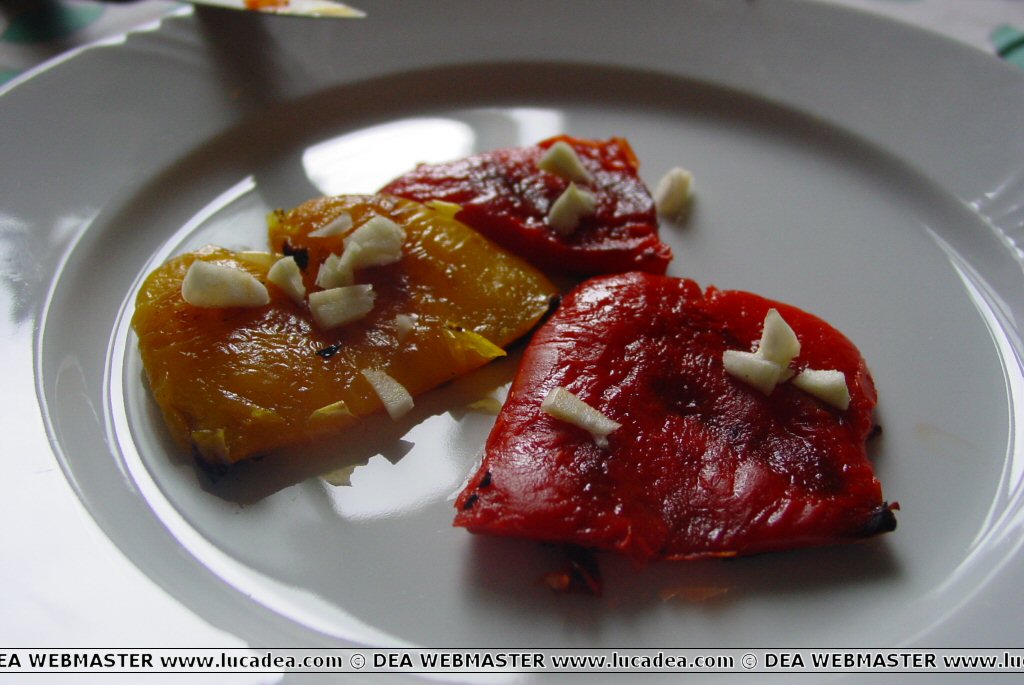Spaghetti con sugo di bottarga.
Si fa un leggero soffritto con bottarega di tonno, olio, pomodorini freschi, pomodorini secchi, acciuga salata, abbondante aglio ed un filino di vino bianco per qualche minuto. Poi si mette la pasta, in questo caso spaghetti. Si salta tutto assieme e poi, il tocco dello Chef (della Chef) una grattatina di bottarega alla fine.
Rosmarino su peperoni
Teste d’aglio
Peperoni alla griglia
Spaghetti with Genoese pesto, the recipe
Spaghetti with pesto, the recipe.
Maybe it's not the official type of pasta to accompany Genoese pesto (trenette or trofie) but making a plate of spaghetti seasoned with that wonder that nature offers us in these parts is spectacular all the same!
And then it's so simple: basil, oil, salt, garlic, pine nuts and cheese.
And tell me I'm not right...
And here is Loris' recipe for spaghetti with pesto:
The basic ingredients of this typical Ligurian sauce are basil, garlic, olive oil, grated cheese and pine nuts.
Now I want to describe some details about some of these ingredients, details that are accompanied by memories of my childhood and of my maternal grandparents, true Ligurians of the eastern Riviera.
– Basil. Nowadays we rightly talk about the basil of Prà which has the perfect characteristics for pesto but once they didn’t even know what it was: my grandfather used to say that the perfect basil without the bad smell of mint had to grow in the shade and that its flowers had to be removed as soon as they sprouted. How could they make pesto on the western and eastern coasts?
– Pine nuts. My grandfather would collect pine nuts under an old pine tree near the house, break their shells and store them in a jar. However, the quantity of them in the pesto was always very limited… When they were finished, my grandmother would buy them an ounce at a time, that is, 25 grams!
– grated cheese: for my grandfather, born in 1886, “cheese” was only Sardinian. He bought one form at a time of the half-aged one, which was consumed sparingly at the table. At the end of the form, the little piece that remained and which in the meantime had become nice and hard was used for cooking, to put on pasta and to make pesto.
– The olive oil must necessarily be Ligurian, due to its characteristics of lightness and fragrance.
Enjoy your meal!
Here I leave you a nice video recipe of GialloZafferano.






